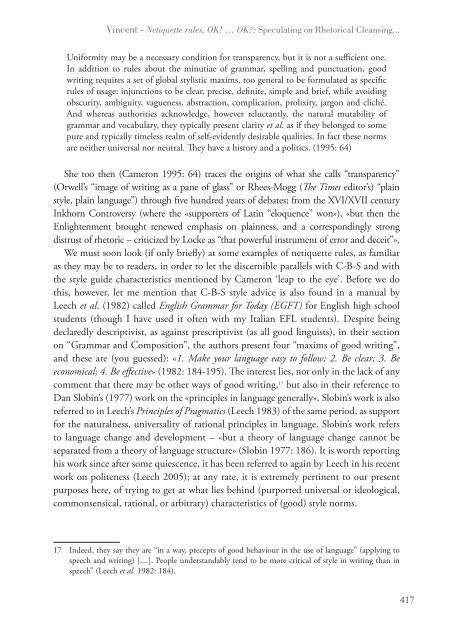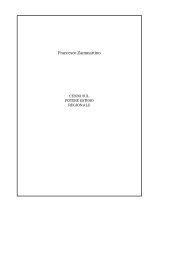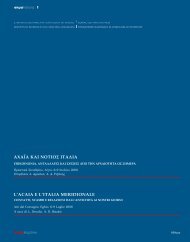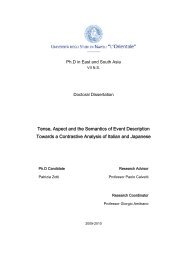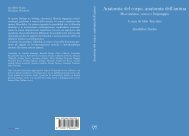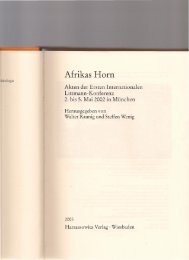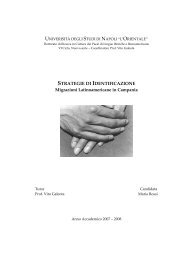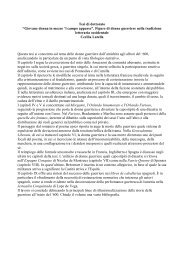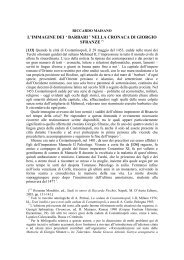Netiquette rules, OK! - OPAR L'Orientale Open Archive
Netiquette rules, OK! - OPAR L'Orientale Open Archive
Netiquette rules, OK! - OPAR L'Orientale Open Archive
- No tags were found...
You also want an ePaper? Increase the reach of your titles
YUMPU automatically turns print PDFs into web optimized ePapers that Google loves.
Vincent - <strong>Netiquette</strong> <strong>rules</strong>, <strong>OK</strong>! … <strong>OK</strong>?: Speculating on Rhetorical Cleansing...Uniformity may be a necessary condition for transparency, but it is not a sufficient one.In addition to <strong>rules</strong> about the minutiae of grammar, spelling and punctuation, goodwriting requires a set of global stylistic maxims, too general to be formulated as specific<strong>rules</strong> of usage: injunctions to be clear, precise, definite, simple and brief, while avoidingobscurity, ambiguity, vagueness, abstraction, complication, prolixity, jargon and cliché.And whereas authorities acknowledge, however reluctantly, the natural mutability ofgrammar and vocabulary, they typically present clarity et al. as if they belonged to somepure and typically timeless realm of self-evidently desirable qualities. In fact these normsare neither universal nor neutral. They have a history and a politics. (1995: 64)She too then (Cameron 1995: 64) traces the origins of what she calls “transparency”(Orwell’s “image of writing as a pane of glass” or Rhees-Mogg (The Times editor’s) “plainstyle, plain language”) through five hundred years of debates; from the XVI/XVII centuryInkhorn Controversy (where the «supporters of Latin “eloquence” won»), «but then theEnlightenment brought renewed emphasis on plainness, and a correspondingly strongdistrust of rhetoric – criticized by Locke as “that powerful instrument of error and deceit”».We must soon look (if only briefly) at some examples of netiquette <strong>rules</strong>, as familiaras they may be to readers, in order to let the discernible parallels with C-B-S and withthe style guide characteristics mentioned by Cameron ‘leap to the eye’. Before we dothis, however, let me mention that C-B-S style advice is also found in a manual byLeech et al. (1982) called English Grammar for Today (EGFT) for English high schoolstudents (though I have used it often with my Italian EFL students). Despite beingdeclaredly descriptivist, as against prescriptivist (as all good linguists), in their sectionon “Grammar and Composition”, the authors present four “maxims of good writing”,and these are (you guessed): «1. Make your language easy to follow; 2. Be clear; 3. Beeconomical; 4. Be effective» (1982: 184-195). The interest lies, not only in the lack of anycomment that there may be other ways of good writing, 17 but also in their reference toDan Slobin’s (1977) work on the «principles in language generally». Slobin’s work is alsoreferred to in Leech’s Principles of Pragmatics (Leech 1983) of the same period, as supportfor the naturalness, universality of rational principles in language. Slobin’s work refersto language change and development – «but a theory of language change cannot beseparated from a theory of language structure» (Slobin 1977: 186). It is worth reportinghis work since after some quiescence, it has been referred to again by Leech in his recentwork on politeness (Leech 2005); at any rate, it is extremely pertinent to our presentpurposes here, of trying to get at what lies behind (purported universal or ideological,commonsensical, rational, or arbitrary) characteristics of (good) style norms.17 Indeed, they say they are “in a way, precepts of good behaviour in the use of language” (applying tospeech and writing) […]. People understandably tend to be more critical of style in writing than inspeech” (Leech et al. 1982: 184).417


